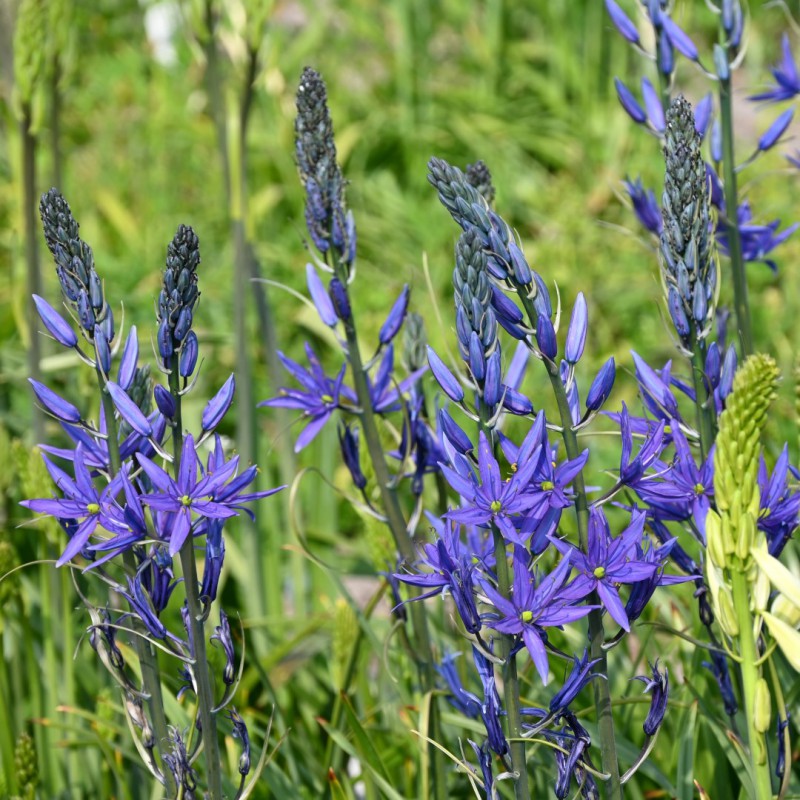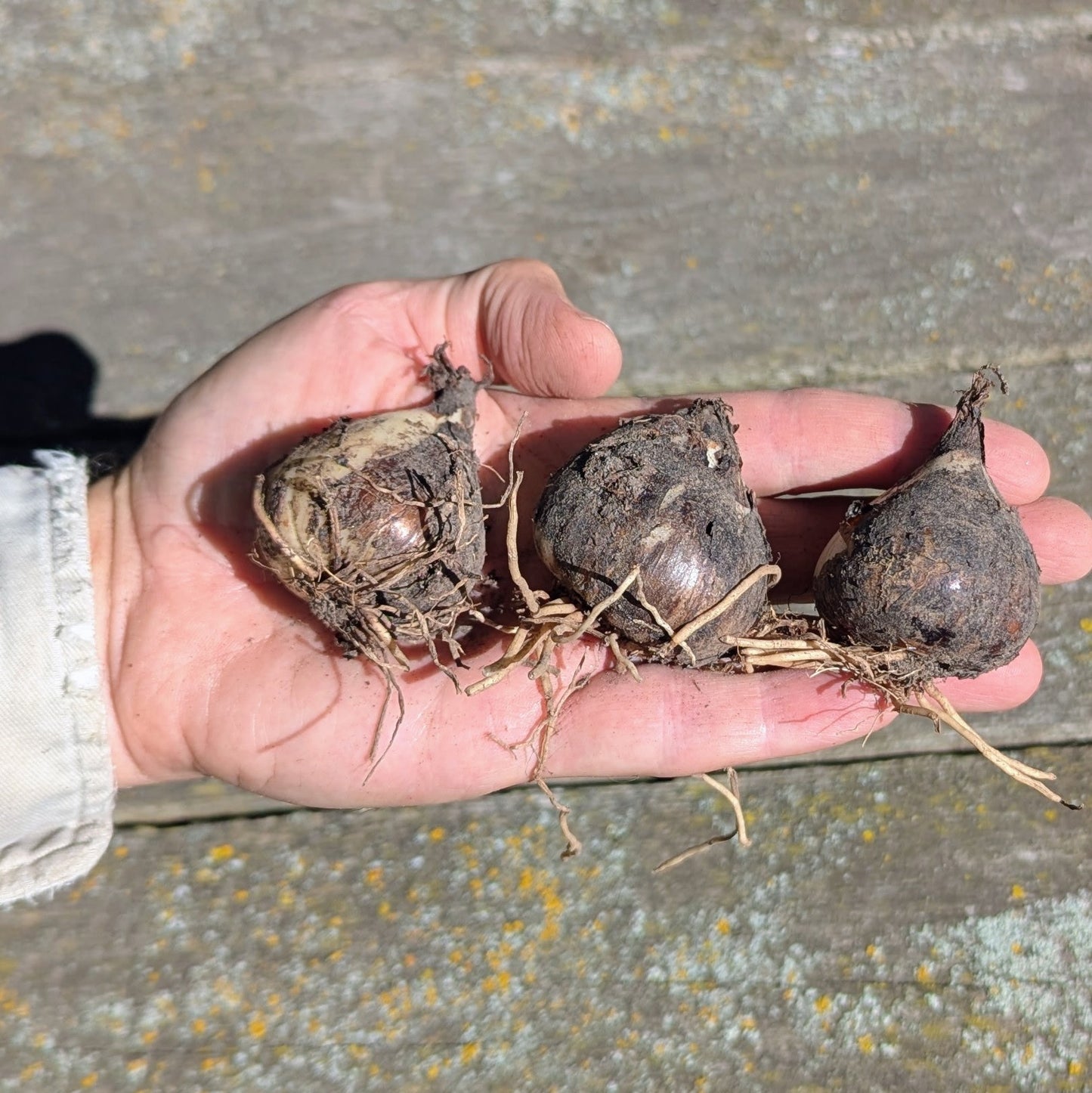Camassia Leichtlinii -- great camas
Camassia Leichtlinii -- great camas
Couldn't load pickup availability
Great Camas, camassia leichtlinii, is the larger cousin of the more common camassia quamash, native to the West Coast of Canada and the US. It can easily be mistaken for its smaller relative: both plants vary in size and flower colour. But great camas is much larger, the bulb can reach 5 to 10 cm across, the flower spike can exceed 1m. The reason why quamash was more widely used is likely because it was more widespread: it divides more readily. Great camas only seems to produce one offset per season, compared with up to 10 for quamash. It is also easily grown throughout most of the continent. It does very well here in Eastern Ontario, and the bulbs are also produced and sold in Europe as ornamental plants. Ours were originally obtained from several sources in British Columbia and have now grown organically on our farm for many years. It produces beautiful flowers, similar to hyacinths (one of its common names is wild hyacinth), and spreads easily by bulb division and abundant seeds.
Cultivation: Full sun, rich soil, preferably moist in the spring. A late spring flower, the leaves die back mid-summer and the bulbs go dormant, at which point they can be gathered, divided, replanted, along with some or all of the seeds. It grows as well or better than many common ornamental bulbs, and is as beautiful as most of them.
Food preparation: The traditional way Native Americans prepared Camas was pit-cooking, something not easily reproduced. We have yet to find the perfect recipe, but we will persevere, undaunted. The very high food value of this plant and its smaller cousin to native Americans amply justified pursuing camas cooking secrets. The cooking instructions found here: http://kwiaht.org/documents/Camascookbook.pdf is one of the best places to start.
Ethnobotany: Camas was an important plant, and a critical food source for most Native Americans in the interior and coastal Northwest. There is abundant evidence that camas was extensively grown in tended gardens throughout the Salish Sea area. Oak-camas parklands bordering the North Pacific are among the most striking landscapes that have existed in human history and remnants still exist today. Tensions flared and wars were fought when European settlers used camas-growing areas to graze cattle. Although quamash was more commonly grown, leichtlinii was also part of the mix.
Share




